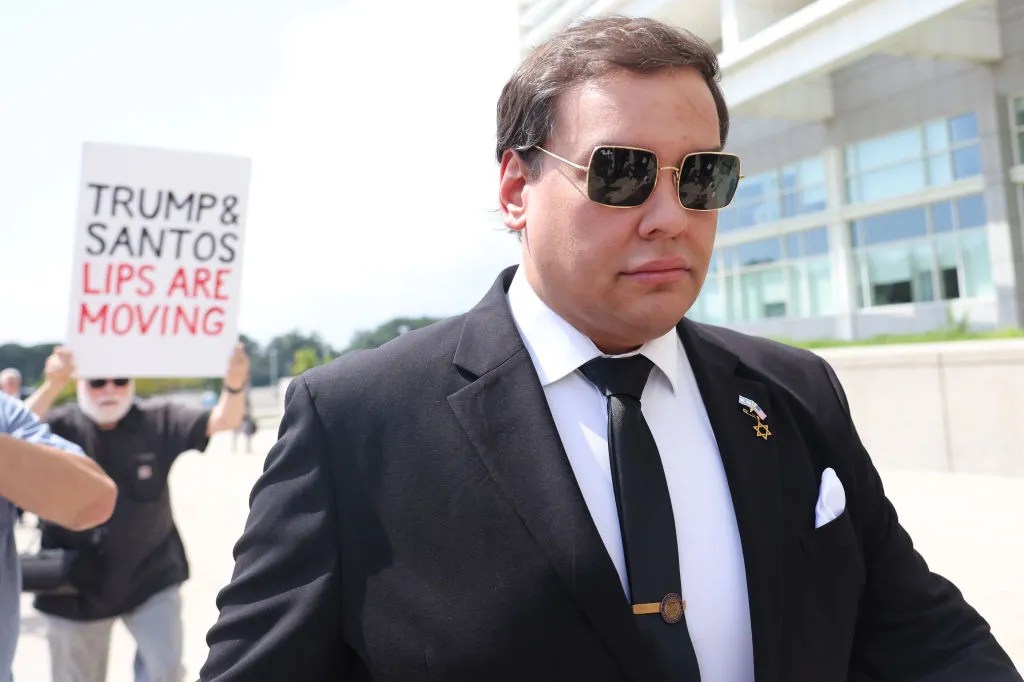2003 ruling bolstered marriage movement; impact elsewhere mixed
On June 26, the day after New York City’s annual Gay Pride March down Fifth Avenue commemorating the Stonewall riots of June 1969—which transformed a tiny gay rights movement into a mass phenomenon—we will celebrate another momentous milestone, the third anniversary of the U.S. Supreme Court’s decision in the Lawrence v. Texas sodomy case.
That ruling, which struck down the Texas Homosexual Conduct Act, held that private consensual adult gay sex is part of the individual liberty interest protected by the due process clause of the United States Constitution.
And just a few weeks ago, we celebrated the 10th anniversary of the Supreme Court’s decision in Romer v. Evans on May 20, 1996, the first decision in which the Court held that governmental discrimination against gay people violates the equal protection requirements imposed on the federal government and on the states by the Constitution. That decision invalidated the Colorado state Constitution’s Amendment 2, which had basically repealed all gay rights laws and policies in Colorado and prohibited the state and any of its subdivisions from adopting new ones.
Both of these important rulings had immediate consequences. The Romer decision put an end to a plague of state and local ballot initiatives inspired by right-wing fanatics who wanted to roll back all the progress the gay rights movement had achieved in winning official non-discrimination policies. The Lawrence decision immediately made laws making it a crime for consenting adults to have anal or oral sex in private unenforceable, invalidating criminal prohibitions in more than a dozen states. Significantly, eliminating sodomy laws removed a presumption of criminality from openly gay and lesbian people that on occasion worked to their legal detriment in employment, adoption, and other areas.
The two decisions also excited considerable optimism based on their theoretical underpinnings and potential positive impact on other pressing community concerns. Yet, that is no simple matter, largely because the majority opinions of the Supreme Court in both cases were written by Associate Justice Anthony Kennedy, who seemed to speak in riddles as he spun out the reasoning in each.
In neither opinion did Kennedy use the traditional, well-established vocabulary of constitutional analysis familiar to scholars and lower court judges. In neither did Kennedy clearly spell out how courts should deal with future cases in which gay litigants were raising due process or equal protection challenges to government policies.
The ambiguous messages sent by these cases, consequently, have resulted in a mixed record for gay rights claims in the lower courts ever since.
Consider same-sex marriage. For many in the community, this has been the big, front-and-center issue since the late 1980s, when the burgeoning AIDS epidemic and the accelerating “gayby boom” fueled increasing interest in the legal and social rights of marriage and its reinforcement of the economic welfare of gay and lesbian families.
But grassroots advocates took the early lead, initially against the wishes of gay public interest law firms, many of whose lawyers were ideologically wary of marriage as a historically sexist institution. Perceptions about the critical role of this issue, however, were turned on their head when the Hawaii Supreme Court ruled in 1993 that gay people might have a state constitutional claim to marry. The community’s leading legal advocates took note, as did the national press, the latter often in hysterical terms, a reaction that by 1996 led to strong bipartisan support for the federal Defense of Marriage Act, signed into law by President Bill Clinton.
The Romer v. Evans ruling regarding Colorado’s Amendment 2 came smack in the middle of the 1996 marriage frenzy and there’s serendipity in that fact. When Kennedy later wrote the majority opinion in Lawrence v. Texas, he pointed out that Romer undermined one of the major obstacles to same-sex marriage—the continuing existence of anti-gay sodomy laws that the Supreme Court had initially upheld in its notorious 1986 Bowers v. Hardwick decision.
The progress toward marriage in Hawaii was eventually stymied by a state constitutional amendment that led to a bar on same-sex marriage, yet that state did grant the first statutory recognition of same-sex couples through the Hawaii Reciprocal Beneficiary Law. As importantly, the 1993 state Supreme Court ruling offered encouragement to the leading legal rights groups to start filing affirmative marriage lawsuits, the first of which bore fruit in 1999 in the Vermont Baker case. Faced with a mandate to give gay and lesbian couples all the state rights and responsibilities associated with marriage, the Legislature and then-Governor Howard Dean created the first civil union law the following year.
But Lawrence v. Texas really lit the fuse in the marriage movement, in which new lawsuits had already been filed in Massachusetts and New Jersey. In Lawrence, Kennedy said that moral objections to homosexuality could not provide the “rational basis” necessary to justify outlawing conduct that fell within the protected “liberty” of the Constitution’s due process clause. In response, an alarmed Justice Antonin Scalia, writing his usual bilious dissent, warned his right-wing fans that Kennedy’s reasoning had eliminated the main legal argument against same-sex marriage.
Kennedy himself attempted to dodge the issue, writing that the case did not “involve whether the government must give formal recognition to any relationship that homosexual persons seek to enter.” In concurrence, Justice Sandra Day O’Connor was even more explicit in stating that “preserving the traditional institution of marriage” raised different issues from sodomy laws, and that reasons other than moral disapproval could be summoned to support that institution.
Scalia was not having it, arguing that “‘preserving the traditional institution of marriage’ is just a kinder way of describing the State’s moral disapproval of same-sex couples,” and that the state’s interest in procreation could not prop up marriage laws, “since the sterile and the elderly are allowed to marry.” “This case ‘does not involve’ the issue of homosexual marriage,’” fulminated Scalia, “only if one entertains the belief that principle and logic have nothing to do with the decisions of this Court.”
Scalia’s red flag was read two ways. Those opposed to gay marriage took it as Scalia intended it—as a call to arms—and the result has been an escalating movement of proposals to amend state constitutions to ban same-sex marriage, many of which enjoyed quick successes. The effort to amend the U.S. Constitution to do the same nationally—and also bar at least some other forms of partner recognition—has been twice rejected by the Senate.
In contrast, Scalia’s warning excited marriage advocates regarding the implications stemming from the Lawrence majority opinion, and provided a new stimulus to their efforts.
Just five months after the Lawrence ruling, in November 1993, the Massachusetts Supreme Judicial Court became the first appellate court in the U.S. to require a state government to extend the right to marry to same-sex couples. The ruling was based in the Massachusetts Constitution but prominently cited Kennedy’s assertion in Lawrence that “our obligation is to define the liberty of all, not to mandate our own moral code,” the precise language that Scalia had disparaged. In early 2004, the high court in Massachusetts rebuffed a proposal from the state Senate to create a civil union law as had been done in Vermont.
The next six months witnessed an extraordinary popular escalation of the demand for same-sex marriage rights. Mayor Gavin Newsom in San Francisco, Mayor Jason West in upstate New Paltz, and local officials in Portland, Oregon, and Albuquerque, New Mexico, began issuing marriage licenses or performing weddings for same-sex couples, adventures quickly halted by higher-ups, including in Newsom’s case the California Supreme Court. Still, the wave of community interest propelled new lawsuits in New York, Connecticut, Oregon, California, Washington State, and Florida—and the list grows.
Now, three years after Lawrence, the efforts to overturn the Goodridge marriage ruling in Massachusetts seem to have faltered, same-sex marriage suits having been argued in the highest courts of Washington State, New Jersey, and New York and await rulings, and cases in Maryland and California have reached the appellate level. In some of the cases in those states, trial judges, relying on the forceful reasoning of Massachusetts Chief Justice Margaret Marshall in the Goodridge opinion, issued preliminary rulings in favor of same-sex marriage.
The impact of Lawrence in other areas has been less dramatic. Kennedy carefully limited the scope of the opinion by emphasizing that the case did not involve public conduct, prostitution, minors, or coercive situations where consent was not clear, and lower courts have taken him at his word. Lawrence has been held to not invalidate laws against public sex, prostitution, sex between adults and minors, incest, or polygamy.
Recently, a federal appeals court ruled that a trial judge in Pennsylvania had jumped the gun in declaring federal obscenity laws unconstitutional in reliance on Lawrence.
Still, Lawrence’s ripple effect has not been limited to the marriage issue. Courts in Virginia ruled that laws against fornication and open cohabitation by unmarried opposite-sex couples had to fall. The Kansas Supreme Court, relying heavily on Lawrence, invalidated a Romeo-and-Juliet law—intended to limit penalties for sex between teens when only one is older than the age of consent—because it provided more lenient criminal sentences for opposite-sex than for same-sex conduct. In doing so, the tragic case of 18-year-old Matthew Limon, sentenced to 17 years in jail for consensual sex with a younger teen, was remedied. A Missouri trial judge said the unenforceable sodomy law—subsequently repealed—could not be used to disqualify a lesbian from being a foster parent on “morality” grounds.
Even military appeals courts have acknowledged that under some limited circumstances—generally involving sex with civilians or private conduct between service members of comparable rank—Lawrence could provide a defense to uniformed personnel charged with sodomy under the Code of Military Justice.
But Lawrence has shown its limitations in two significant cases in which it was expected to be helpful—the challenge to Florida’s anti-gay adoption law, and the first of several new lawsuits against the military’s anti-gay Don’t Ask, Don’t Tell policy.
Ever since Anita Bryant’s 1977 “Save Our Children” campaign created the hysteria that overturned Dade County’s first gay rights law, Florida has maintained a statutory ban on “homosexuals” adopting children. After several lawsuits based on due process and equal protection grounds failed in state and federal courts, Lawrence, which incidentally invalidated Florida’s sodomy statute, seemed to offer a new opening. The plaintiff couple in the new Lofton case did not bear the stigma of presumed criminality that they would have prior to Lawrence, and had proved their abilities as foster parents aiming to adopt the children already living with them in a stable, well-functioning family.
But the somewhat unconventional reasoning of Kennedy’s Lawrence opinion emerged to defeat the plaintiffs’ hopes at the U. S. Court of Appeals for the 11th Circuit in Atlanta, where the case went after an adverse district court ruling.
Kennedy had not clearly stated that gay sex was protected as a “fundamental right;” instead he struck down the Texas sodomy law on the ground that the state had no “legitimate interest” that would justify criminalizing consensual sex between adults. As a result a majority of the appeals court panel concluded that laws disadvantaging gay people do not involve fundamental rights.
Furthermore, the 11th Circuit construed Kennedy’s earlier, equally obscure opinion in the Romer Colorado case as rejecting the idea that anti-gay discrimination is constitutionally suspect, meaning that the state need merely show a rational basis for barring gay adoption. Had anti-gay bias been interpreted as suspect, Florida would have been required to show a more compelling justification.
Despite the appeals court’s statement that the reasons “could not be proved,” it found that it was rational for Florida to think that children would be better off raised by traditionally married opposite sex couples than by gay individuals or couples. In doing so, it ignored mountains of data presented by the plaintiffs’ attorneys from American Civil Liberties Union that showed the policy’s irrationality—not least the sterling record of gay foster parents in Florida, and the long waiting lists of children seeking adoption for lack of traditional married prospective parents.
The ACLU hoped that full appellate panel would reconsider the 2-1 panel finding, but a deadlocked vote resulted and the Supreme Court refused to review the case, allowing the Florida prohibition to continue.
The military ban is the other major looming issue and several lawsuits came in the wake of Lawrence, after a half dozen years in which legal advocacy groups refrained from new court challenges. The Servicemembers Legal Defense Network, an advocacy group for gay and lesbian soldiers, brought a case in Boston, hoping that in light of Romer and Lawrence and of the pro-gay enlistment policies of the U.S.’s most prominent military allies, federal courts would take a new look at Don’t Ask Don’t Tell.
Yet, two months ago, a federal judge in Boston granted the government’s motion to dismiss the case. With gay sex not seen as a fundamental right and sexual orientation not judged a suspect classification, the military policy would not be put to tough judicial review. Instead, wrote the judge, this is another example where the government need only supply a rational basis for its policy—exactly the way the matter would have been resolved prior to Romer 10 years ago.
Lawrence and Romer remain the two critical national victories for the gay civil rights movement, but their impact is limited and constrained. Looking to the legal standing of our community just a generation ago, we have plenty to celebrate this Sunday, but the path ahead remains long and treacherous.
gaycitynews.com


































